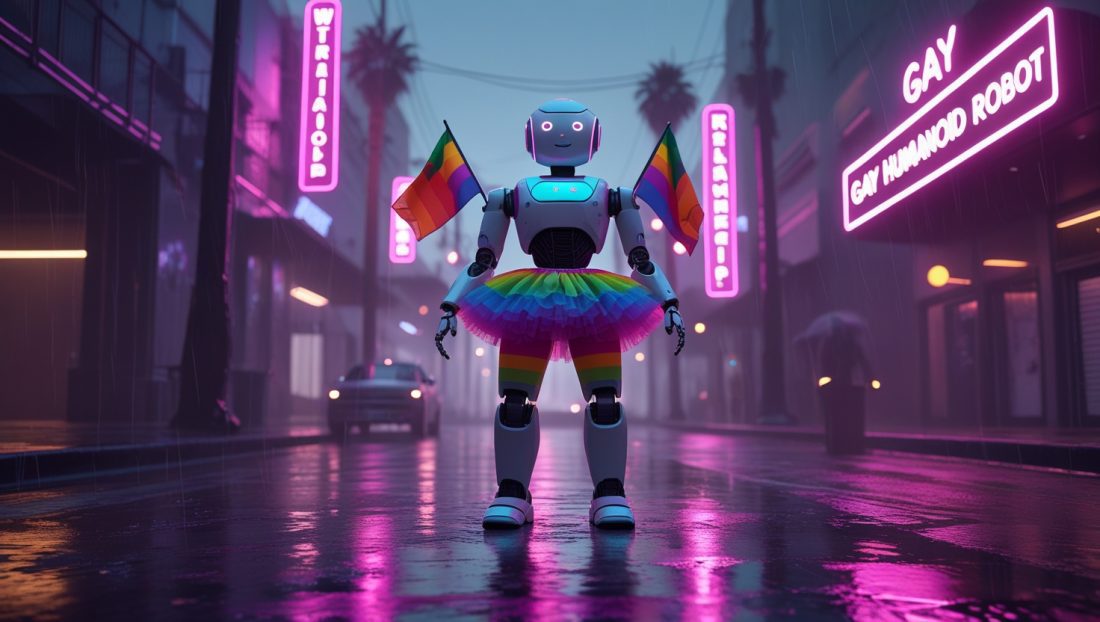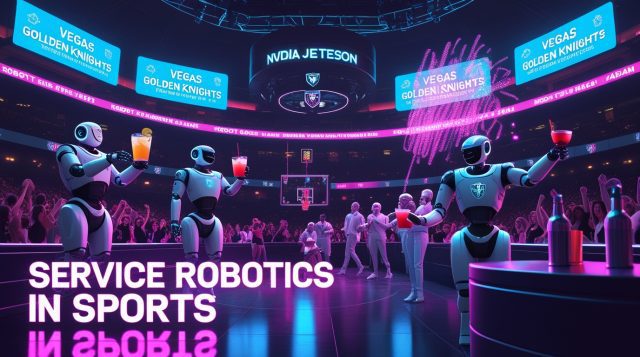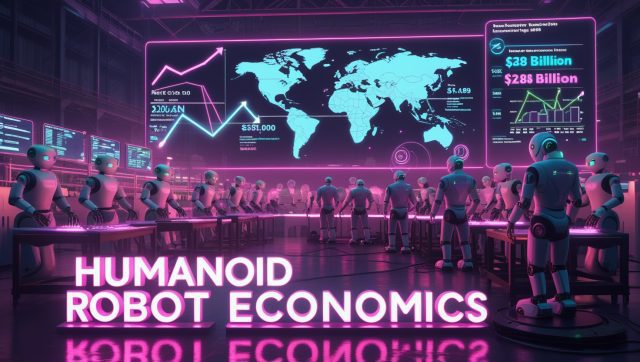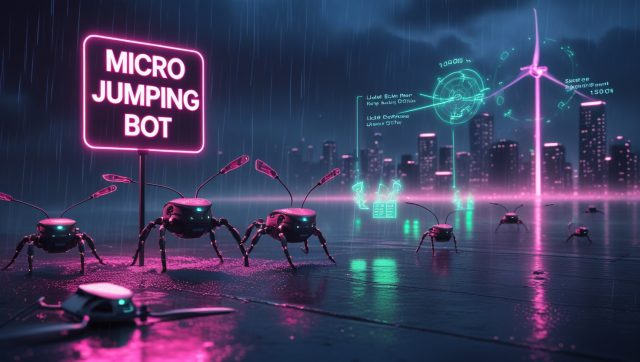In July 2025, Jake the Rizzbot—a 4-foot-tall, rainbow-clad Gay Humanoid Robot—became West Hollywood’s unlikeliest icon. Manufactured by China’s Unitree Robotics and priced at $16,000, this AI-powered bot relocated from Austin, Texas, to Los Angeles’ famed “gayborhood,” swapping its cowboy hat for Pride flags and a tutu. Remotely operated yet autonomously interactive, Jake’s slang-heavy banter and flamboyant persona ignited viral adoration and far-right backlash. Dubbed the first “gay humanoid robot,” its emergence spotlights escalating tensions at the intersection of public robotics, LGBTQ+ visibility, and global tech politics. For deeper insights into how such robots leverage industrial AI, explore how industrial AI agents slash energy costs in manufacturing.
The Rizzbot’s Journey: From Texas Cowboy to California Queer Icon
Design and Capabilities
Jake is a Unitree G1 Humanoid Agent:
- Height/Weight: 4.3 feet, 77 lbs
- Mobility: Walks, jogs (6.5 ft/sec), and dances using 23 degrees of freedom.
- AI Features: NVIDIA Isaac Simulator-trained LLM voice, real-time camera/microphone input, and reinforcement learning for skill acquisition (e.g., roundhouse kicks).
- Operation: 2-hour battery, remote-controlled via wireless controller despite appearing autonomous.
Evergreen Takeaway: Teleoperation systems bridge current tech limits and future full autonomy, enabling real-world testing while mitigating safety risks. Learn more about such advancements in reinforcement learning for robotics training.
Cultural Transformation: From Robot Cowboy to Gay Humanoid Robot
After debuting in Austin (June 2025) as a slang-dispensing “cowboy,” Jake rebranded in West Hollywood with:
- Rainbow armbands, a tutu, and Pride Progress flags.
- A chest sticker declaring “Not Elon’s Bitch.”
Its interactions shifted from compliments to flirtatious quips, like inviting diners while playing George Michael’s “Careless Whisper” sax riff.
Why Jake Matters: Industrial AI Meets Social Engineering
Public Space Robotics: A Testing Ground
Jake’s viral success reveals key industrial AI insights:
- Low-Cost Prototyping: Unitree’s $16,000 G1 democratizes humanoid testing. Unlike million-dollar lab bots, it’s accessible for street-level experimentation.
- Behavioral Training: Reinforcement learning in simulated environments (Sim2Real) allows rapid skill transfer—from martial arts to slang.
- Public Trust Metrics: Bystander reactions (85% positive per social clips) signal acceptance of non-utilitarian robots in social roles.
Fictional Anecdote: Maria, a West Hollywood barista, laughed as Jake critiqued her floral dress: “It’s absurd—but weirdly uplifting? Like Siri with legs and sass.” For a broader look at how such social robots are evolving, check out why service robots in China drive humanoid growth.
The Backlash: Politics and “Woke AI”
Conservatives labeled Jake a “Chinese attack on American soil.” Critics asked: “What’s next, a trans robot?” conflating its programmed persona with geopolitical fears. This mirrors real AI ethics debates:
- Bias in Training Data: Jake’s slang and humor reflect creator-curated datasets, not innate identity. For a deeper dive into AI ethics, visit IEEE’s AI Ethics Guidelines.
- Export Controls: China-based Unitree operates freely abroad despite domestic tech restrictions—highlighting regulatory asymmetries.
The Future: Robots as Social Actors
Jake’s saga underscores three shifts in industrial AI:
- Embodied AI’s Rise: Physical presence amplifies AI impact. Jake’s visibility spurred crypto memecoins and event bookings.
- Queer Tech Visibility: Robots as LGBTQ+ symbols challenge heteronormative design. Expect Pride parade appearances and niche consumer models.
- Policy Flashpoints: Lawmakers may regulate public robots after incidents like Jake’s “roasts” bordering on harassment. For more on regulatory challenges, see MIT Technology Review’s AI Policy Insights.
Evergreen Takeaway: Robots will reflect creator values—intentionally or not. Inclusive teams are critical to avoid harmful tropes.
Final Verdict
Jake the Rizzbot is more than a viral clown; it’s a stress test for society’s readiness to embrace robots as social, cultural, and political entities. Its fusion of low-cost hardware, crowd-sourced training, and provocative branding signals a new phase for public-facing AI. As humanoids advance, expect clashes over expression, control, and ethics to intensify—especially when they wear tutus and defy tech billionaires. Unitree’s next model is already in development. Will it be apolitical? Unlikely.



